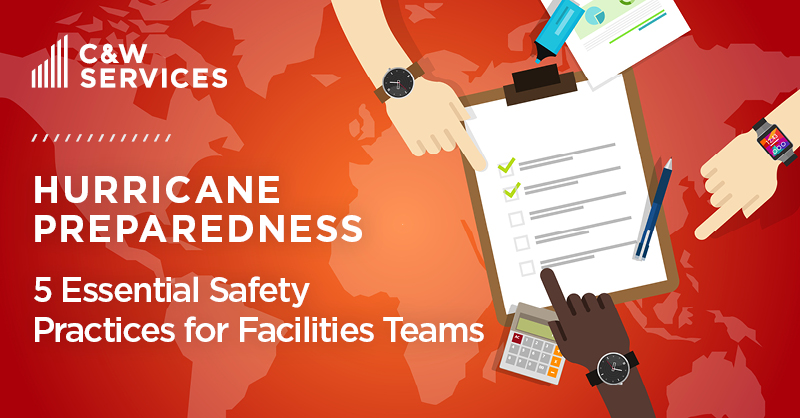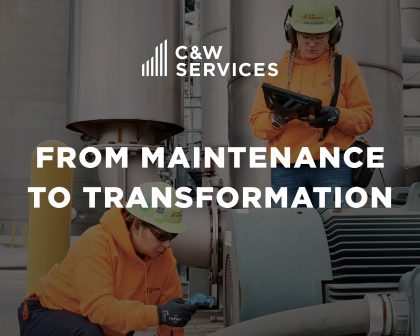
Every year, the arrival of June 1 signals the beginning of hurricane season, impacting millions of individuals across the United States. While the season primarily targets the Atlantic and Gulf of Mexico coasts, its effects can extend to other regions as well. During this period, it becomes imperative for facilities teams to prioritize heightened awareness and preparedness in the face of potential hurricanes. At C&W Services, safety is a core value that guides our daily operations. As we approach National Preparedness Month in September, we have established five crucial safety practices to effectively navigate flood-affected areas resulting from hurricanes.
1. Assess Structural Integrity
Buildings submerged or exposed to floodwaters are at risk of structural damage, which can pose serious hazards. Before entering such structures, a comprehensive structural evaluation is essential. If any damage is observed, it’s imperative to involve a qualified professional to thoroughly assess the building’s condition prior to entry. Never assume that water-damaged structures or grounds are stable. Exercise caution and consider staircases, floors, and roofs unsafe until they have been properly inspected.
2. Safe Entry into Flood-Damaged Buildings
Prior to entering a flood-damaged building, ensure that the electricity supply is disconnected or turned off at the meter. If any shifting or unusual noises suggest a potential collapse, evacuate the area immediately. Avoid using open flames, such as matches or lighters, as trapped gas may present a danger. Instead, opt for explosion-proof flashlights or light sticks. If there is a suspicion of a gas leak or a gas odor is detected, evacuate the premises immediately and notify the gas company. Be vigilant for displaced animals, particularly snakes, which may seek refuge within the building.
If feasible without exposure to water, disable power at the main breaker or fuse on the service panel. Even if the power is off in your community, this step should be taken. Alternatively, contact your utility company to arrange power disconnection. Refrain from turning the power back on until a qualified electrician has inspected the electrical equipment. Never interact with, move, or utilize electrical equipment when the ground is wet, unless you have confirmed that the power is disconnected. Equipment exposed to moisture should undergo thorough inspection, drying, cleaning, and repair before power is reinstated.
If you are trained to do so, shut off the gas at the main valve; otherwise, seek assistance from your gas company. Regularly inspect storage and piping systems containing flammable liquids, addressing any leaks or damages promptly. Smoking should be prohibited, and a fire watch should be implemented until all fire protection systems are operational and normal operations can resume.
Floods have the potential to displace tanks, drums, pipes, and equipment, some of which may contain hazardous materials such as pesticides, chemicals, or fuels. Floodwaters often carry biohazards like sewage, medical waste, animal remains, and other hazardous substances such as asbestos or farm chemicals. Whenever possible, limit contact with floodwaters and assume contamination upon contact. Personal Protective Equipment (PPE) like boots, goggles, and gloves are indispensable when dealing with floodwaters. Even minor cuts and burns should receive immediate first-aid attention due to the potential exposure to contaminated water.
By following these five safety best practices, facilities teams can effectively mitigate risks and ensure the well-being of individuals and properties during hurricane-related incidents. As National Preparedness Month approaches, taking these precautions can make a significant difference in the safety and resilience of your team and your facilities.
Read more about C&W Services’ efforts last year in the wake of Hurricane Ian
Get access to more information from the resources below:




